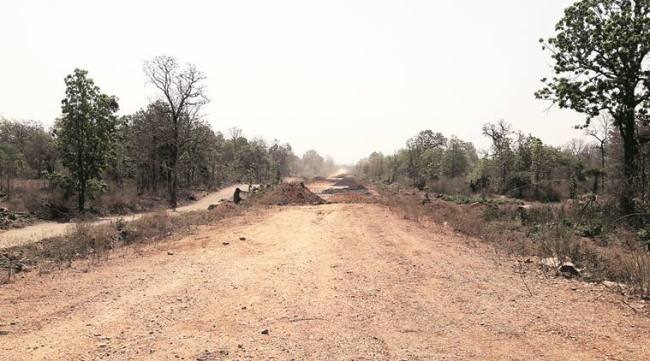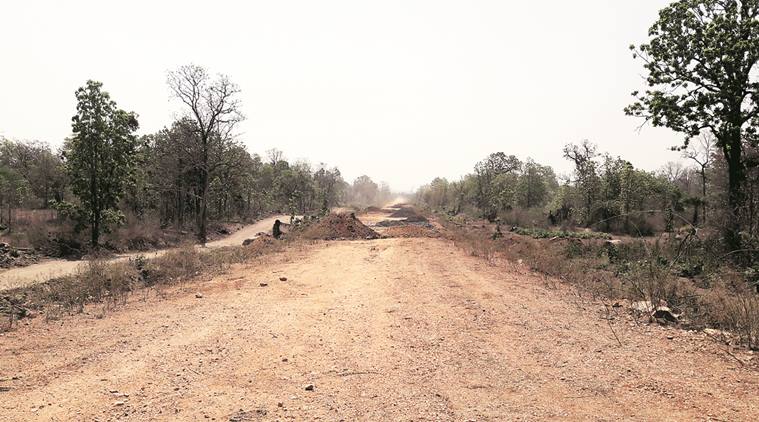Opinion Wrong question after Sukma
It is unfair to question the capabilities of the CRPF after every Maoist ambush.
 The road in Sukma that the CRPF was guarding. Source: Dipankar Ghose
The road in Sukma that the CRPF was guarding. Source: Dipankar Ghose  The road in Sukma that the CRPF was guarding. Source: Dipankar Ghose
The road in Sukma that the CRPF was guarding. Source: Dipankar Ghose
The recent attack on the Central Reserve Police Force (CRPF) in Sukma, Chhattisgarh, in which 25 personnel lost their lives, has again brought to the fore its capability to tackle Left Wing Extremism (LWE). Self-proclaimed experts, including those from the defence services, with no exposure to LWE, have been questioning the capabilities of the CRPF.
That the CRPF is a well-trained and highly motivated force would be evident from the series of successful operations it has conducted across the country. The army has a full-fledged Intelligence Corps to garner intelligence and feed its field units. Not so the CRPF, which banks heavily on the state police for intelligence. Though the CRPF has taken a step forward to set up its intelligence wing, it will take time to effectively operate in disturbed areas. Undoubtedly, there has been an intelligence failure in all Maoist attacks on CRPF men in LWE areas. Though the strength of the Maoists who attacked the CRPF in Sukma varies from 150 to 400 according to media reports, the fact that such a large strength of Maoists grouping around the area went unnoticed by the intelligence agencies calls for a thorough probe. Since the Maoists are observing the 50th year of their movement, not just the intelligence agencies but also the security forces in the 104 districts of the 13 LWE-affected states should have expected something of this nature and exercised extra caution.
That the CRPF is performing a very important role in combating insurgency in the Northeast, tackling militants in Jammu and Kashmir and extremists in LWE-affected areas calls for no emphasis. Yet, the government did not consider it important enough to appoint a director general for nearly two months. Three posts of special directors general are also vacant for the last few months. One of these special directors general is tasked to oversee operations in LWE-affected areas. It is an additional director general — a relatively junior post — Sudeep Lakhtakia, who is now officiating as the DG of this three lakh-strong paramilitary force, the largest in the world. The government must decide on the chiefs of the central paramilitary forces well in advance of their retirement, as is done in the defence services.
According to the standard operating procedures (SOP) for LWE-affected areas, at least a third of the CRPF strength should comprise of state police personnel. In Sukma, at least 30 personnel of the Chhattisgarh police should have accompanied the CRPF company. But often, due to staff shortage in local police stations, CRPF men set out on operations either with a few policemen or on their own, carrying out duties like providing protection to contractors building roads, as happened in Sukma. There are 1,781 vacancies in the Chhattisgarh police.
The Supreme Court has asked states like Uttar Pradesh, West Bengal, Bihar and Jharkhand to fill up these vacancies on priority.
What is intriguing is while the Armed Forces Special Powers Act (AFSPA) is promulgated in the Northeast and Jammu and Kashmir where the army is deployed, the same is not done in LWE-affected areas. This act empowers the armed forces to arrest, search, even kill a person on suspicion. The central paramilitary forces need to be empowered fearlessly in LWE areas too.
For the April 6, 2010 attack in Dantewada, in which 75 CRPF personnel were martyred, a CRPF officer of the rank of inspector general of police had to face humiliation by an inquiry during which he was deprived of full pension, though subsequently restored. An IPS officer of the rank of deputy inspector general of police on deputation to the CRPF, who was directly controlling the operation that went awry, was let off. The humiliation of CRPF officers sends out a wrong message to the personnel serving in very tough conditions. A court of inquiry is conducted after every such incident. But these should draw on facts and lessons, rather than victimise the commanders.





